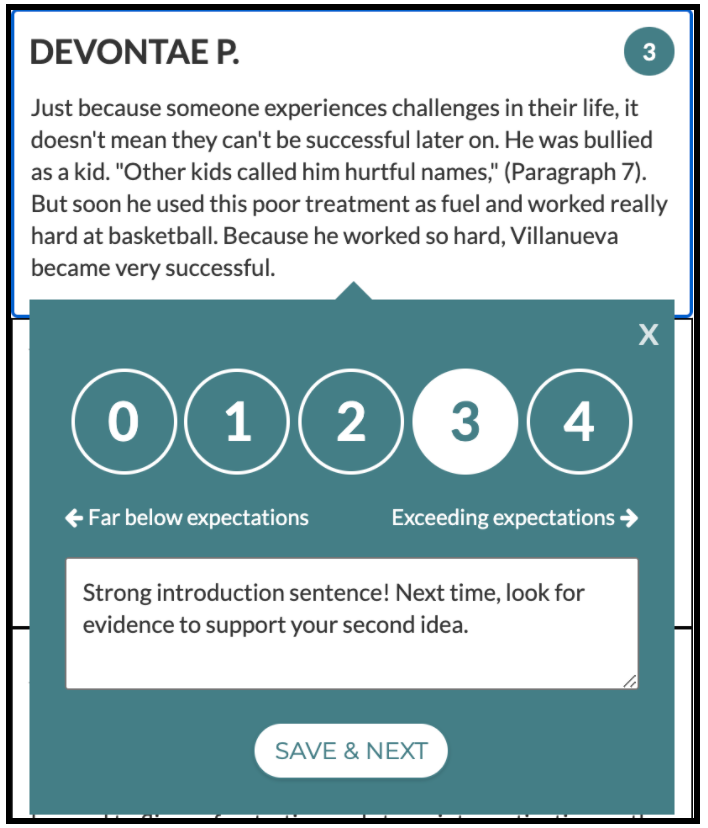Use CommonLit’s library and data tools to help students learn from their mistakes!
Creating a classroom culture where mistakes are celebrated is a great way to promote student progress. Of course, students need the right support to learn from their mistakes and develop a growth mindset.
CommonLit has a variety of tools to encourage students to embrace a growth mindset. In this post, we’ll walk through how you can leverage our resources to help your students flourish!
Reading About Growth Mindset
“Growth mindset” is the belief that we can get better at things if we work hard. Developing a growth mindset helps us see setbacks as opportunities to learn. At CommonLit, we know that students need to have confidence in themselves to be able to succeed in school and beyond. With this in mind, we’ve curated some informational texts for different grade levels about growth mindset to read and discuss with your students:
- “Noticing Mistakes Boosts Learning” by Alison Pearce Stevens (6th Grade)
- “Cultivate Resilience: How to Get Back on the Horse” by Rebecca Zucker (7th Grade)
- “Lessons from Failure: Why we try, try again” by Bethany Brookshire (7th Grade)
- “The Best Way to Deal with Failure” by Selin Malkoc (8th Grade)
- “Grit: The Power of Passion and Perseverance” by Angela Lee Duckworth (8th Grade)
- “Want to Go to College? Learn to Fail” by Angel B. Perez (9th Grade)
- “New Math: Fail + Try Again = Real Learning” by Susan Moran (10th Grade)
- “Let’s Teach for Mastery, Not Test Scores” by Sal Khan (10th Grade)
If you are looking for more informational texts and short stories, we recommend exploring our “Resilience and Success” theme in the CommonLit digital library. Your students will love reading about real-life figures and fictional characters who demonstrate a growth mindset!
Digital Tools to Promote Growth Mindset
While it is important to read and talk about growth mindset, it is also important to give students practice noticing and learning from their own mistakes. CommonLit’s digital tools and data tracking features give students the opportunity to grow and set goals for improvement.
Guided Reading Mode
Guided Reading Mode is a helpful tool that you can turn on for some or all of your students when they are reading a text. The feature chunks the text into shorter sections and has students stop to answer Guiding Questions, or comprehension questions, while they read. Students have to answer each Guiding Question correctly to move on to the next section of a text, but they get multiple attempts to do so.
Using Guided Reading Mode helps students monitor their own understanding of a text. It is also a great way to show them that it’s okay if they don’t get the answer to a question right on the first try. They can always go back and use the strategies they have developed to try again.

Providing Feedback on Student Annotations
Giving students meaningful feedback is one of the most effective ways to promote a growth mindset. Naming what students do well helps them celebrate their successes, and giving constructive feedback about how they can improve helps them learn from mistakes and set goals.
CommonLit’s teacher data dashboard includes two avenues for giving students written feedback. One way is to view student annotations. Within an Assignment Report, you can see all of the highlights and annotations students have made in their text. As the teacher, you can click on an annotation and type a response.

Responding to students’ annotations is a great way to praise the work they have done to understand the text, and a meaningful opportunity to correct misconceptions or push their thinking if they need more support.
Providing Feedback on Short Answer Responses
Grading students’ short answer responses is another way to give specific feedback. You’ll click on the circle in the top right corner of their response, give them a rubric score between 0–4, and then leave your feedback. We recommend giving students notes about what they did well and how they can improve their writing next time. For example, here I told Devontae that his response had a strong start, and he can work on finding evidence that supports his thinking.

Students will see your short answer feedback when you release their scores. Giving students time to review their scores and your notes is an important way to help them develop a growth mindset. It gives them agency over their own performance and a starting point to discuss goal-setting.
You can also always give students a chance to try an assignment again with the “Unsubmit” feature. Pressing the “Unsubmit Assignment” button allows students to revise their previous answers and submit the assignment again, which is another way to show students the importance of noticing and correcting mistakes.

Using Student Data to Set Goals
Individual conferences are a great opportunity to help students develop their growth mindset. Teachers can share their data displays to discuss performance with students and motivate them to meet their goals.
There are lots of data points you could review with students for goal-setting, but let’s zoom in on two. First is a student’s submitted assignments table. Sharing this data with students can help them notice patterns in their work, including their multiple choice and short answer responses.

Another data point you could share with students is their performance by standard. For example, if I know Nicole is working on identifying and explaining relevant evidence, she and I could look at her data for RI.1 to notice trends, write a goal, and create a plan to achieve it.

Next Steps
We hope these tips for encouraging students to embrace a growth mindset are helpful, and we are here to support you and your students! If you have any questions about using CommonLit, please email help@commonlit.org.
If you would like to learn more about CommonLit’s full digital literacy program, join one of our upcoming webinars!


